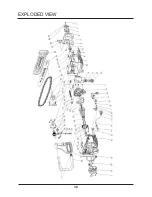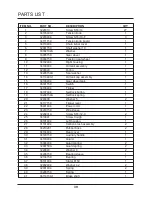
24
OPERATION
LIMBING (See Figure 20)
(Limbing is removing branches from a fallen tree.)
• Work slowly, keeping both hands on the chainsaw with a firm grip. Always make sure your
footing is secure and your weight is distributed evenly on both feet.
•
Leave the larger support limbs under the tree to keep the tree off the ground while cutting.
•
Limbs should be cut one at a time. Remove the cut limbs from the work area often to help
keep the work area clean and safe.
•
Branches under tension should be cut from the bottom up to avoid binding the chainsaw.
•
Keep the tree between you and the chainsaw while limbing. Cut from the side of the tree
opposite the branch you are cutting.
PRUNING (See Figure 21)
(Pruning is trimming limbs from a live tree.)
• Work slowly, keeping both hands on the chainsaw with a firm grip. Always make sure your
footing is secure and your weight is distributed evenly on both feet.
•
Do not cut from a ladder. This is extremely dangerous. Leave this operation for professionals.
• Do not cut above chest height, because a saw held higher is difficult to control against
kickback.
• When pruning trees, it is important not to make the finishing cut next to the main limb or trunk
until you have cut off the limb further out to reduce the weight. This prevents stripping the bark
from the main member.
• Underbuck the branch 1/3 through for your first cut.
•
Your second cut should overbuck to drop the branch off.
• Now make your finishing cut smoothly and neatly against the main member so the bark will
grow back to seal the wound.
W A R N I N G
Never cut through to the notch when making a back cut. The hinge controls the fall of the tree. This
is the section of wood between the notch and backcut.
Fig. 20
Fig. 21
Содержание 00-0000-0
Страница 38: ...38 EXPLODED VIEW...
Страница 41: ...41 NOTES...
Страница 42: ...TOLL FREE HELPLINE 1 888 90WORKS 888 909 6757...
















































